What’s the Difference Between Dvi-i and Dvi-d?

Ever wondered what the difference is between DVI-I and DVI-D? Don’t worry, you’re not alone. It can be confusing to tell the two apart, as they look quite similar.
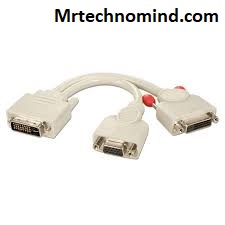
| DVI-I | DVI-D |
| Has both digital and analog signals | Only has digital signals |
| Can be used with both digital and analog displays | Can only be used with digital displays |
| Has four extra pins surrounding the flat pin on the long side of the connector | Has a flat pin on the long side of the connector |
| Can transmit both digital and analog signals simultaneously | Can only transmit digital signals |
| Has a wider range of compatibility with different displays | Used mainly for digital displays |
In this article, we’ll take a closer look at the differences between these two types of DVI cables and explain when each one should be used. Read on to learn more!
What is Dvi?
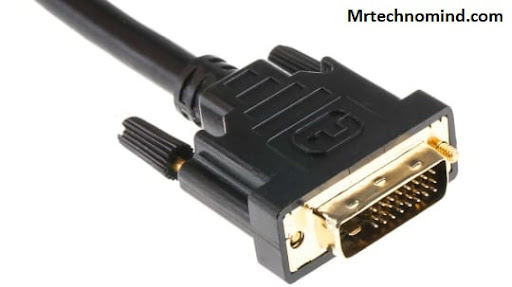
Digital Video Interface (DVI) is a video interface standard used to connect computers and other digital devices with display screens. It was developed by an organization called the Digital Display Working Group (DDWG).
DVI is commonly used for connecting computer monitors to computers, as well as for connecting DVD players, gaming consoles, and other digital devices. DVI has two different types: DVI-I and DVI-D.
DVI-I includes both analog and digital signals in one connector: The four pins on the left side of the connector are for analog signals, while the four pins on the right are for digital signals. On the other hand, DVI-D only supports digital signals. It has no pins on the left side of its connector; instead, it has eight pins on the right side that can carry up to eight bits of data at once.
The main difference between these two types of DVI is that one supports both analog and digital signals while the other only supports digital signals. As such, when choosing which type of DVI to use, it’s important to consider what kind of video signal you need to transfer. For example, if you’re using a monitor with an analog input, then you’ll need a DVI-I connector; if your monitor uses a purely digital input then you’ll need a DVI-D connector.
Moving forward, we’ll discuss what’s the difference between DVI-i and DVI-d in more detail.
What’s the Difference Between Dvi-i and Dvi-d?
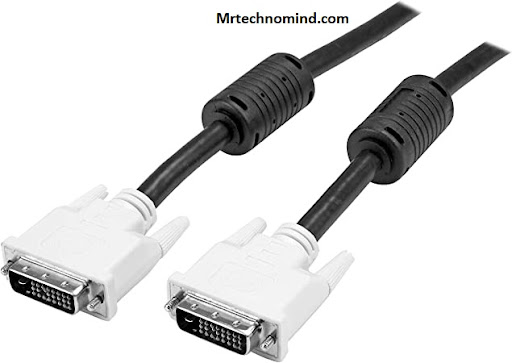
The Digital Visual Interface (DVI) is a type of video interface technology that allows digital displays to be connected to computers. It’s been around since 1999 and continues to be used today in many electronic devices.
However, there are two main types of DVI: DVI-I and DVI-D. So what’s the difference between them?
DVI-I stands for Digital Video Interface with Integrated Analog. This type of DVI connection supports both digital and analog signals, making it the most versatile option available. It can be used to connect any type of display from LCD monitors to HDTVs. The downside is that it requires an adapter if you want to use the analog signal side of the connection, as you won’t find many devices that have this capability built in.
On the other hand, DVI-D stands for Digital Video Interface with Digital only, meaning it only supports digital signals. This makes it less versatile than its counterpart as it can only be used with digital displays such as LCD monitors or projectors. However, this also means that you don’t need an adapter if you want to use this connection; all you need is a compatible device and cable.
So while both types of DVI offer unique advantages and disadvantages, one thing remains clear: both are useful for connecting digital displays to your computer or other devices. Armed with this knowledge, let’s move on and take a closer look at what DVI-A has to offer.
What’s Dvi-a?
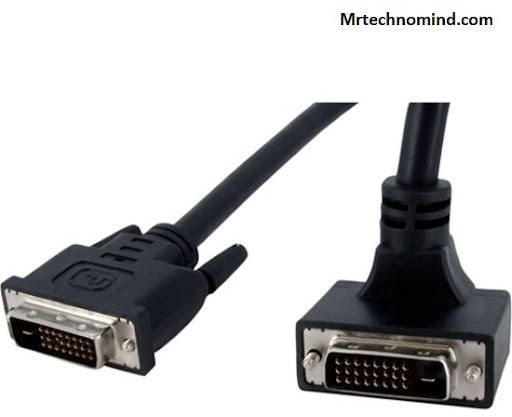
DVI-A is a Digital Visual Interface (DVI) connector that supports analog signals. It is similar to the DVI-I connector and offers an alternative method of transmitting analog video signals.
It has three rows of pins, with one row of pins dedicated to analog signals and two rows of pins for digital signals. The main difference between DVI-A and DVI-I is that the former can only carry analog video signals while the latter can carry both digital and analog video signals simultaneously.
This means that if you need to connect a device with an analog signal, you must use a DVI-A cable instead of a DVI-I cable. It’s important to note that the physical shape and size of both DVI-A and DVI-I cables are identical, so it’s not possible to tell them apart just by looking at them.
Knowing how to identify which type of cable is which will be important when making sure you have the right cable for your specific application. With that in mind, let’s take a look at how we can tell the cables apart.
How Can I Tell the Cables Apart?
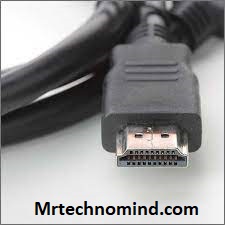
I’m not sure how to tell the difference between DVI-I and DVI-D cables. Can someone help me identify them?
To identify a DVI-I cable, look for four pins along the top side and four pins along the bottom side of the connector.
To identify a DVI-D cable, look for four pins along the top side, but none along the bottom side.
So, if there are pins along the bottom side, it’s a DVI-I cable; if there are no pins along the bottom side, it’s a DVI-D cable.
Identifying Dvi-i
Do you ever get frustrated trying to figure out which cable is the right one for your device? It can be a real headache, especially when it comes to DVI-I and DVI-D connections. Understanding the difference between these two cables can help you make sure that you’re using the correct one for your needs.
So let’s take a look at how you can tell them apart. The easiest way to identify a DVI-I cable is by looking at the number of pins. If it has four pins on each side, then it is a DVI-I cable. However, if it only has two pins on each side, then it is a DVI-D cable. In addition, there will also be noticeable differences in the size of the connectors as well; a DVI-I connector will be larger than a DVI-D connector.
Now that you know how to identify both types of cables, there should be no more confusion when trying to connect devices to your computer or television! With this knowledge in hand, you can easily distinguish between the two so that you can make sure that whatever device you’re connecting is compatible with your setup.
Identifying Dvi-d
Now that you know how to identify a DVI-I cable, let’s take a look at how you can tell a DVI-D cable apart.
The easiest way to differentiate the two is by looking at the number of pins. If there are four pins on each side, it’s a DVI-I cable. But if there are only two pins on each side, then it’s a DVI-D cable.
You can also identify them by the size of their connectors; the DVI-I connector will be larger than the DVI-D one.
Knowing these differences will help you make sure you’re connecting the right cables for your devices. That way, you won’t have any compatibility issues when trying to get everything hooked up.
Dvi-d Cable
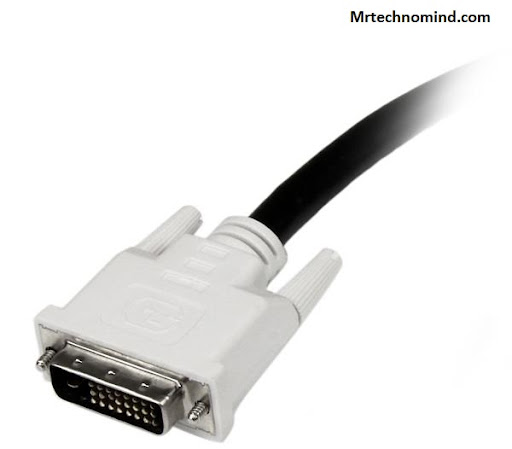
A DVI-D cable is a type of digital visual interface (DVI) cable that is most commonly used for connecting source devices to displays, such as computer monitors. This type of cable transmits video signals from one device to another through its 24+1 pins, and it does so without any signal conversion.
Here are the four main advantages of using a DVI-D cable:
- **High Resolution:** The high-resolution capability of DVI-D cables makes them ideal for gaming, multimedia projects, and other activities that require viewing detailed images or videos.
- **Stable Signals:** Digital signals sent through a DVI-D cable remain stable throughout the transmission process and do not deteriorate in quality due to interference or noise.
- **Cost Effective:** Compared to other types of cables, DVI-D cables are more cost-effective and provide greater value for money.
- **Compatibility:** Not only can you use a DVI-D cable with different types of digital displays, but also with analog displays as well; this makes them versatile and highly compatible with various devices.
Overall, DVI-D cables offer superior performance when compared to other types of cables for transmitting digital video signals from one device to another without any signal loss or damage. To get the most out of your experience when connecting multiple devices together, it is important to choose the right type of cable for the job – in this case, a DVI-D cable is your best bet!
Moving on to the next topic – DVI-i cable…
Dvi-i Cable
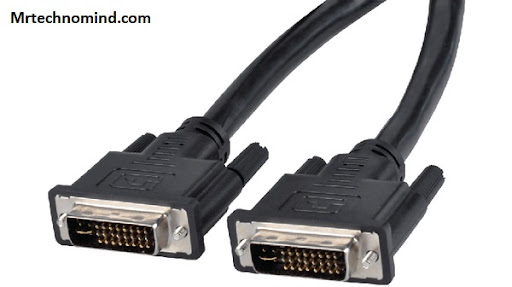
Compatibility:
It’s compatible with both digital and analog signals, making it a versatile option.
Connector Type:
It has the same 24-pin connector for both analog and digital signals, making it easy to identify.
Signal Type:
DVI-I cables are capable of transmitting both digital and analog signals, so it’s great for a variety of applications. It supports both single-link and dual-link configurations, allowing for higher resolutions. It also supports up to 8 bits per color channel, allowing it to transmit a wide range of colors. Lastly, it’s capable of transmitting video signals up to a resolution of 2048×1536 in analog form.
Compatibility
When it comes to compatibility, DVI-I cables are a great choice because they offer the most flexibility. They are compatible with both digital and analog signals, which makes it easy to connect different devices.
With one cable, you can connect computers, televisions, projectors or any other device that has a DVI port. You don’t have to worry about buying two different types of cables for each device; DVI-I has you covered!
DVI-D cables also offer some compatibility options but not as many as DVI-I. It is primarily designed for digital connections and only carries digital signals. If you’re connecting two digital devices together then this type of cable is probably your best bet.
However, if you need an analog connection then you will need to look at another option such as VGA or HDMI cables instead.
Overall, when it comes to compatibility options then DVI-I is the best choice because it provides both digital and analog options in one cable. Plus, since it’s designed for both types of connections it gives you the flexibility to make sure all of your devices are connected without having to buy multiple types of cables!
Connector Type
Moving on, another important factor to consider when looking at DVI-I cables is the connector type. There are two types of connectors available for DVI-I cables: male and female.
Male connectors have pins that insert into the female connector, while the female connector has holes for the male pins to fit into. Therefore, it’s important to make sure you get the correct connector type for your device or else you won’t be able to use it. Depending on what kind of device you have, you might need an adapter or converter in order to make a connection.
When it comes to choosing a cable, you should also look at its length. If your devices are far from one another then you’ll need a longer cable; shorter ones might not reach both devices. Fortunately, there are plenty of different lengths available so you should be able to find one that fits your needs perfectly.
So if you’re looking for a high-quality cable with great compatibility and flexibility options, then DVI-I is definitely worth considering. With its wide range of connector types and lengths, it’s easy to find a cable that will work perfectly with your devices.
Signal Type
Moving on, the signal type is another important consideration when looking at DVI-I cables.
This type of cable transmits both digital and analog signals, so it’s compatible with a wide variety of devices.
This makes it great for connecting older and newer devices, as well as for connecting to displays that support both types of signals.
It also supports high resolutions, up to 4K, meaning you can get a crystal clear picture with no lag or distortion.
So if you need a cable that can transmit high-quality images over long distances then DVI-I is a great choice.
Plus, it’s easy to find cables that are compatible with different kinds of device connections including HDMI and DisplayPort.
Dvi-a Cable
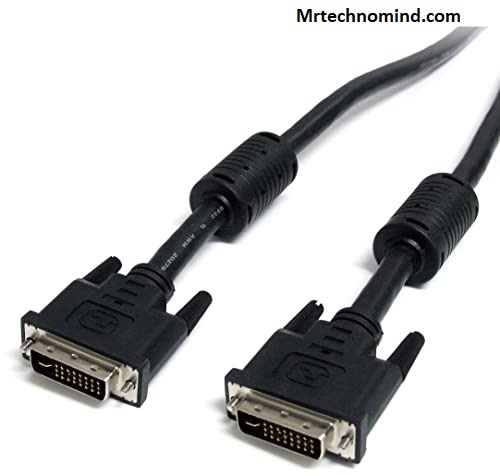
The physical characteristics of DVI-A cables are similar to that of regular DVI cables; they are typically grey and have two rows of pins.
However, the important difference between DVI-A and other types of DVI cables, such as DVI-D and DVI-I, is in the way they connect devices.
DVI-A cables feature four analog pins, DVI-D cables have four digital pins and DVI-I cables have both digital and analog pins.
So, the main difference between DVI-I and DVI-D is the type of connection they provide.
Physical Characteristics
The physical characteristics of DVI-A cables are quite different from those of its counterparts. These cables have a single row of pins on the connector and are usually colored white, with a hint of orange hue. They are compatible with both digital and analog signals, but they won’t be able to carry HDCP or EDID signals.
The connectors on these cables are not reversible and will only fit one way in the port. Moreover, they have a maximum resolution of 1920 x 1200 pixels at a 75 Hz refresh rate.
DVI-A cables are also known for their durability as they are made up of high-quality materials like copper which can withstand wear and tear quite easily. Furthermore, these cables can provide excellent signal transmission over long distances without any loss in quality or speed. On the other hand, because of the configuration of the single-row pin, it may be difficult to troubleshoot any problems that arise while using these cables.
Overall, DVI-A is an ideal choice for anyone who needs good signal transmission over short to medium distances with no need for HDCP or EDID support. It is especially useful for connecting computers to monitors that require analog signals as well as digital ones.
Connectivity
When it comes to connectivity, DVI-A cables are great. They’re compatible with both analog and digital signals, so you can connect your computer to virtually any monitor or device. Plus, they offer good signal transmission over short to medium distances and don’t require HDCP or EDID support. As an added bonus, they’re highly durable and don’t suffer from signal loss even over long distances.
All in all, these cables make sure that you get the best possible connection every time. On the other hand, their single-row pin configuration makes troubleshooting more difficult than with other types of cables. Additionally, their maximum resolution of 1920 x 1200 pixels at a 75 Hz refresh rate may not be sufficient for some applications.
Despite these drawbacks though, DVI-A remains a great choice for anyone looking for reliable connectivity without having to worry about HDCP or EDID support. Overall, DVI-A cables provide a great way to ensure good signal transmission over short to medium distances without any need for additional hardware or software support. With their high durability and compatibility with both digital and analog signals, they remain one of the best options for connecting computers to monitors that require analog signals as well as digital ones.
When to Use Each Cable

Having discussed DVI-A cables, let’s now look at when to use each type of cable.
DVI-I cables are a great choice when you need both digital and analog video signals. They can be used in any situation where either signal is needed.
On the other hand, DVI-D cables are best for pure digital transmission, as they don’t support analog signals. This makes them ideal for connecting a computer to a monitor or TV that only supports digital input.
If you’re unsure of which type of cable your device needs, then DVI-I is usually the safest bet since it offers compatibility with both types of signal.
When it comes to choosing between DVI-A and DVI-D, the main difference lies in the type of video signal being transmitted. With DVI-A, you get both digital and analog signals; while with DVI-D, you get just digital signals.
Which one you choose will depend on the device you’re connecting to. For example, if your device only has a digital input port then you’ll need a DVI-D cable; whereas if it supports both digital and analog inputs then a standard DVI-I cable should work fine.
In summary, if you want both digital and analog signals then opt for a DVI-I cable; but if you’re only looking for digital transmission then go with a dedicated DVI-D cable instead. Be sure to check what type of video signal your device requires before making your purchase.
Frequently Asked Questions
1. How Can I Convert Between Dvi-i and Dvi-d?
Converting between DVI-I and DVI-D can be tricky, as both types of connectors are different in terms of their pin configurations.
DVI-I is equipped with four additional pins that allow it to transmit analog video signals, while DVI-D does not have these extra pins and can only transmit digital signals.
The most common way to convert between the two types is to use an adapter cable or a converter box that allows you to switch from one type of connector to the other.
However, it’s important to note that this method may not always work due to compatibility issues.
2. What is the Maximum Resolution Supported by Dvi-d?
DVI-D (Digital Visual Interface) supports resolutions up to 2560×1600 at a 60Hz refresh rate.
It is the most common type of DVI connection and is used for digital video signals only, meaning it does not support any analog signals.
It provides a great quality video signal, with minimal interference and distortion, making it ideal for high-definition monitors and displays.
3. What Devices Are Compatible With Dvi Cables?
Many devices are compatible with DVI cables, but it’s important to understand the difference between DVI-I and DVI-D as not all devices support both.
While it may seem like a minor detail, the maximum resolution supported by each type of cable is different, so it’s worth double-checking that your device will work with the version of the cable you have.
For instance, DVI-D supports resolutions up to 2560×1600 while DVI-I can manage up to 1920×1200.
So if you’re looking for higher resolutions, you’ll want to make sure you have a DVI-D cable handy!
4. Are Dvi Cables Interchangeable With Hdmi Cables?
No, DVI cables are not interchangeable with HDMI cables.
While both cables are typically used to connect a computer to a display device, DVI connectors are designed for video signals only and do not support audio signals.
HDMI cables, on the other hand, can carry both video and audio signals.
Depending on the type of devices you need to connect, one type of cable may be more suitable than the other.
5. Does Dvi-d Support Audio Signals?
Do you ever wonder if DVI-D can support audio signals?
That’s a great question and the answer is, yes!
DVI-D does have the capability to send audio signals.
It’s important to note that DVI-I cables are slightly different in that they actually don’t support audio transmission.
So, while both types of cables are compatible with HDMI, only one supports audio transmission.
Conclusion
In conclusion, it’s important to know the differences between DVI-I and DVI-D when connecting digital devices. Whether you’re a gamer or a video editor, understanding the nuances of this technology can help ensure your devices communicate effectively.
By understanding the versatility of DVI cables and their ability to connect a variety of devices, you can unlock the potential of your digital tools.
So if you’re in need of an answer to the question: “What’s the difference between DVI-I and DVI-D?” You now have all the information needed to make an informed decision. With these details at your fingertips, you can open up a world of possibilities with your digital devices!